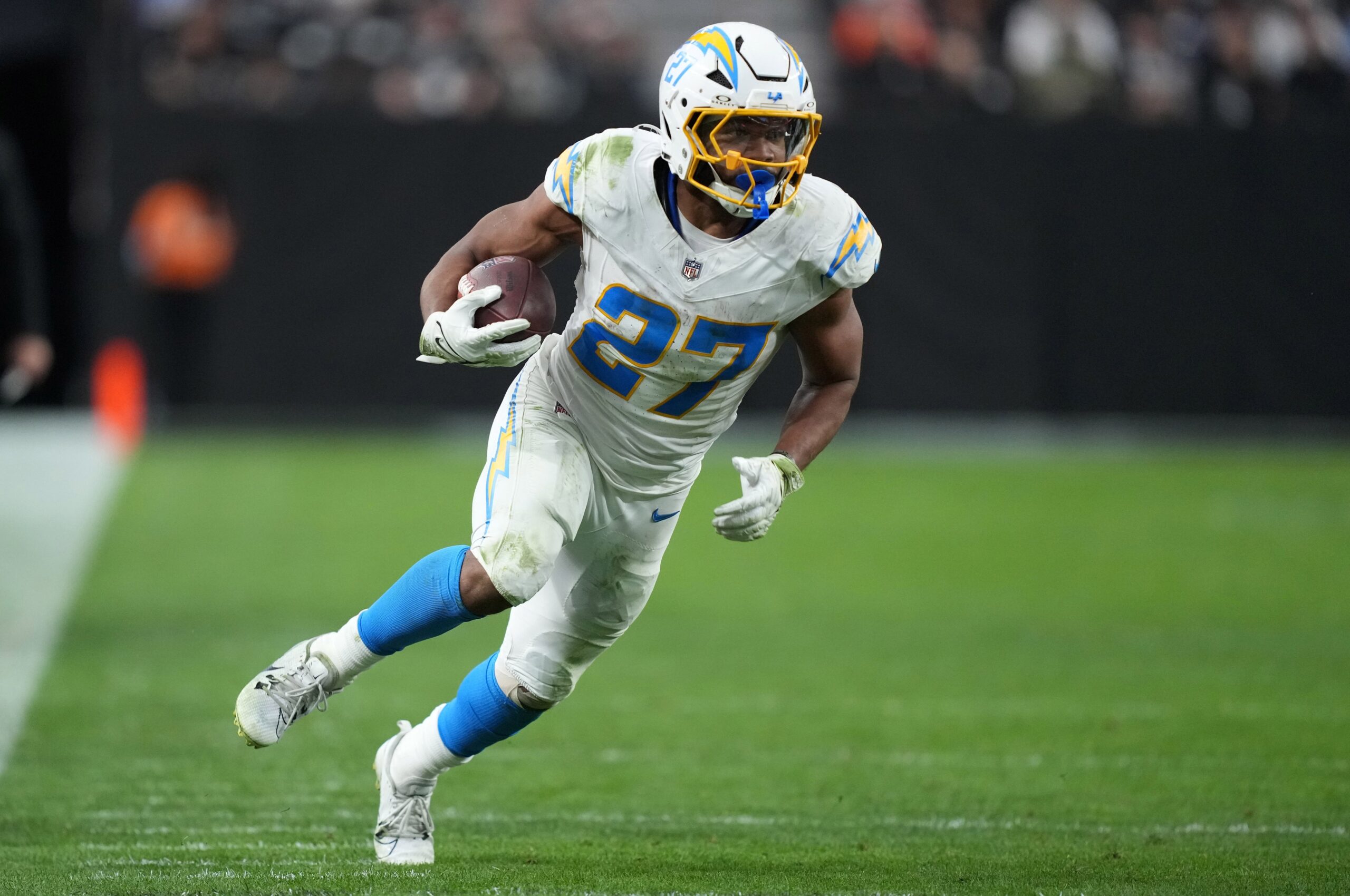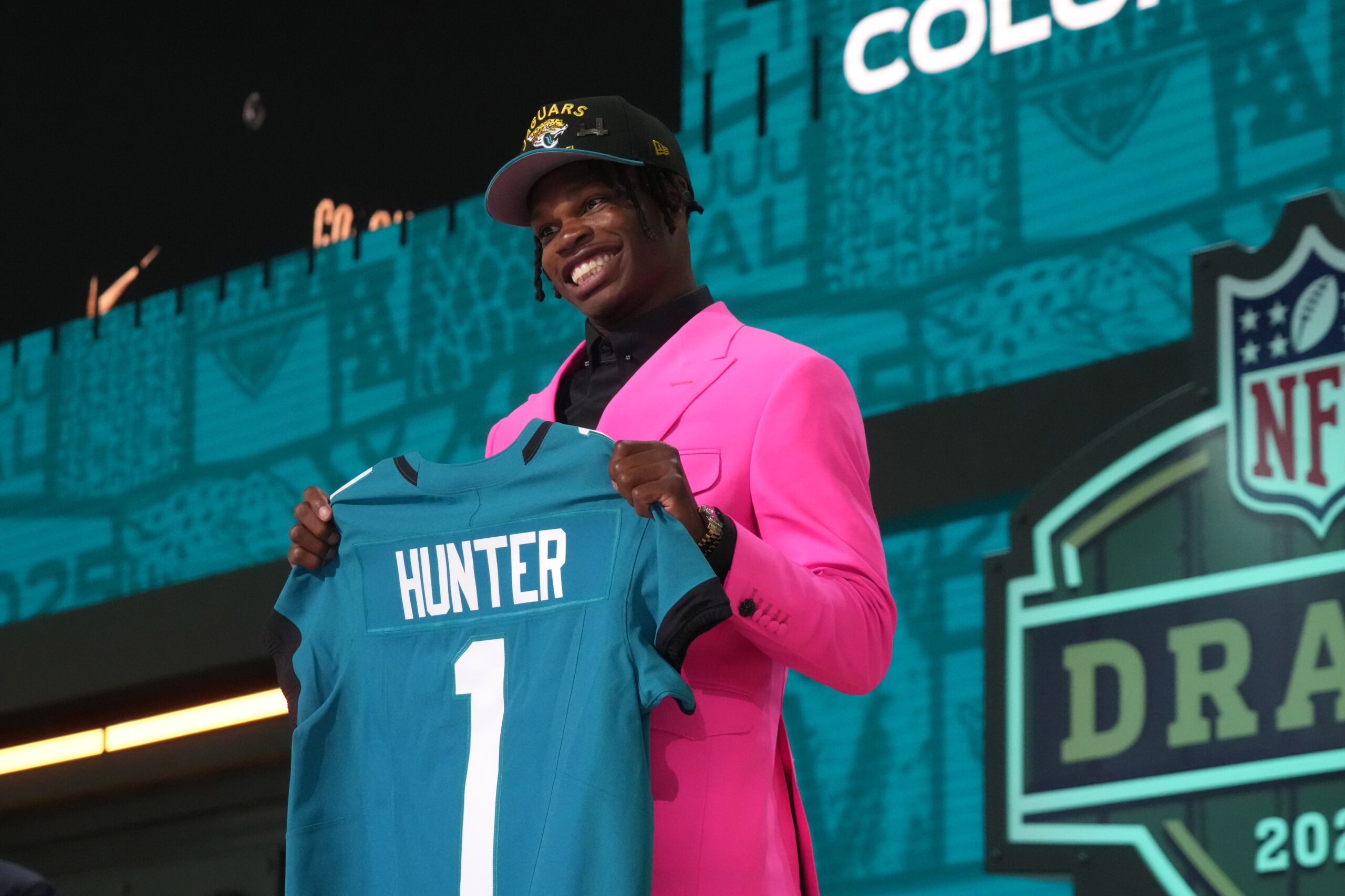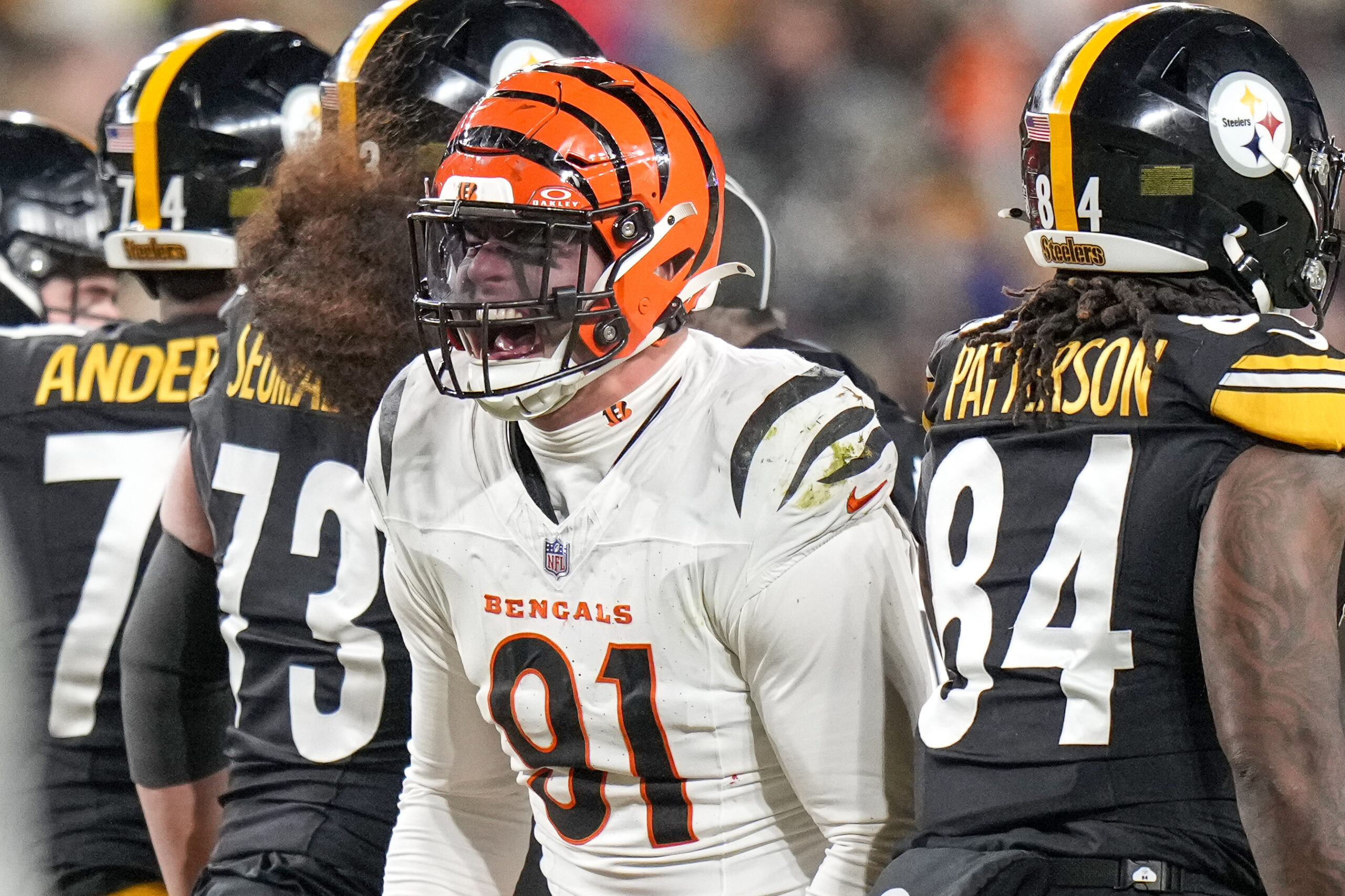Expert Analysis
12/5/24
11 min read
Brock Bowers' Historic Rookie Season Is Even Better Than You Think

Rookie tight ends don’t typically click right away. Historically, it’s been a position that takes a few years to fully develop a player into their final form. Even when rookie tight ends do hit, they don’t tend to do so as Brock Bowers has so far.
The 13th overall pick in the 2024 NFL Draft leads the league in receptions (84) through Week 13, and he’s fourth in receiving yards (884). That’s among all receivers, not just tight ends or this rookie class.
He’s been an immediate impact player, and that impact has only grown throughout the season. Bowers is on pace to join Kyle Pitts and Mike Ditka as the only rookie tight ends to eclipse 1,000 receiving yards in a season, and he should easily pass Ditka’s rookie record of 1,076.
A Top Option
Bowers hasn’t just become a great receiving threat; he’s also the receiving threat on the Las Vegas Raiders. Since the Davante Adams trade, Bowers has been the No. 1 receiver in Vegas. The Adams trade created the opportunity, and Bowers has run with it — literally.
His usage has completely shifted since Adams left, but he was also only on the field with Adams for 82 routes during the first three games of the season. Here’s how Bowers looks with and without Adams on the field:

Without Adams, Bowers has seen more than 30 percent of the Raiders’ targets. He’s also become a more versatile player. Early in the year, Bowers was lined up in the slot on more than half of his snaps — 56.8 percent of the time. Without Adams, that’s dropped to 42.3 percent, while he’s bumped up the amount of time he’s spent lining up outside.
That’s led to more snaps where he’s faced man coverage. At the beginning of the season, he only averaged 0.62 yards per route run against man but was only facing it on 15 percent of his routes. When the Raiders faced man coverage while Adams was on the field, the top receiver saw 40 percent of the team’s targets. That’s understandable. But Adams only averaged 0.79 yards per route run against man in that time.
Now, without Adams, Bowers has seen man coverage on 26.6 percent of his routes and has averaged 2.34 yards per route run against it. For the full season, Bowers is second in yards among tight ends against man coverage and third in target share and yards per route run.
The man coverage success is nothing to discount. Sometimes, tight ends can be matchup nightmares in man coverage because they’re too fast for a linebacker and too big for a slot corner. But with Bowers being the most dangerous receiving threat on the team, he’s getting tougher matchups, occasionally against an opposing team’s best defender.
Here’s Bowers in Week 12, catching a slot fade against Trent McDuffie, who was also called for defensive pass interference on the play.
Early in the season, the Raiders were getting Bowers into favorable positions by moving him around and taking advantage of his movement ability. In this play against the Rams, the Raiders motioned Bowers to the outside receiver in a trips bunch. Then, he ran a whip route that put the cornerback on the ground as Bowers created space after the catch.
The Raiders haven't done a lot of things well this season but one thing they've figured out is creatively getting Brock Bowers the ball pic.twitter.com/Bg4yPimDc4
— Dan Pizzuta (@DanPizzuta) October 24, 2024
Those yards after the catch have been huge for Bowers. That’s partly because of a low average depth of target. His average target has only come 5.54 yards beyond the line of scrimmage. Of 194 receivers and tight ends with at least 100 routes this season, that ranks 164th. But among 63 tight ends, that ranks 39th.
It could be easy to write off the yards after the catch as a product of a low aDOT, but according to Next Gen Stats, Bowers is second among tight ends in yards after the catch over expectation (+91), behind Tucker Kraft (+126). He’s 16th among all players. Bowers is also sixth in YACOE against press coverage.
Studies have shown that aDOT is controlled more by the receiver than the quarterback or offense, but given how Las Vegas has been on offense, with poor quarterback play and already firing their offensive coordinator, it’s tough to say everything is running at peak efficiency. Bowers playing as the short-area option feels like making sure there’s a safety net on most plays rather than fully unleashing Bowers as a receiving threat.
Even so, Bowers isn’t a Jarvis Landry-type receiver just hogging up short, inefficient targets. He can win all over the field, and his ability to do so still pops. His strength to run through contact no matter where he’s lined up has come through, as it did on this deep touchdown against Kansas City.
Bowers is tied among tight ends for the most touchdowns of at least 10 air yards (three), and his eight gains of 20 or more yards on 10+ air-yard throws are second to George Kittle, who has nine.
A Rare Rookie
There has not been a rookie tight end to completely take over an offense like Bowers has at this point in the season. Bowers’s 27.1 percent target share through Week 13 is the highest for a rookie tight end since at least 2000, according to TruMedia.
The next-highest tight end was Evan Engram in 2017, who, like Bowers, had a top receiving teammate for a limited number of games (Odell Beckham played four games).

The other two recent players in this group are Sam LaPorta and Pitts. Pitts was technically the top receiver for the Falcons as a rookie and had the volume to eclipse 1,000 receiving yards, but he wasn’t the main focal point of the offense. LaPorta had Amon-Ra St. Brown as the leading target-getter in last year’s Detroit offense.
Jeremy Shockey had one of the most productive rookie seasons on this list. He was first-team All-Pro at tight end in 2002, but he even had Amani Toomer as the Giants’ top receiver with more targets, receptions, and yards. Despite the first-team All-Pro honors at tight end, Shockey only finished second in Offensive Rookie of the Year voting that season to Clinton Portis, who had 1,508 rushing yards and 15 rushing touchdowns.
Bowers is just one of six rookies to have at least a 25 percent target share through Week 13.
Rookie Target Share Leaders Through Week 13, 2000-2024 (per TruMedia)

This year, Malik Nabers has also been a rookie flooded with targets on a bad offense with few other receiving options, but Bowers has still surpassed his production.
Bowers vs. Gronk
There have been some comparisons to the production of Rob Gronkowski’s rookie season. By DYAR, Gronkowski has the highest mark for a rookie tight end. But it’s difficult to fully compare what these two players were asked to do — they’re almost playing different sports.
Gronkowski killed in efficiency because he had 10 receiving touchdowns. However, he was specifically weaponized for that. He had 15 targets and nine touchdowns just in the red zone. He only had 59 targets total, while Wes Welker (123), Deion Branch (74), and Aaron Hernandez (64) had more.
There were also four games played by Randy Moss in that season, though that was the start of the end for Moss, who was traded back to Minnesota and eventually waived just a few weeks later. Those receivers also had a first-team All-Pro season from Tom Brady at quarterback.
Gronk was definitely a better blocker than Bowers, but weighing that more than what Bowers has had to carry in the passing game feels like an apples-to-oranges comparison. Bowers has not been a great blocker, but he also hasn’t been a negative at the position.
According to Sports Info Solutions, Bowers has 151 run-blocking snaps this season with a 0.7 percent blown block rate. That’s tied for fourth among 32 tight ends with at least 150 run-blocking snaps on the year. The Raiders have the league’s worst run game by EPA per play — and a historically bad one — but that doesn’t fall on Bowers. Bowers could be a Kittle-level blocker, but that’s not helping this version of the Las Vegas run game.
He hasn’t been asked to pass block that much (just 24 snaps) because, again, he’s the team’s best receiver.
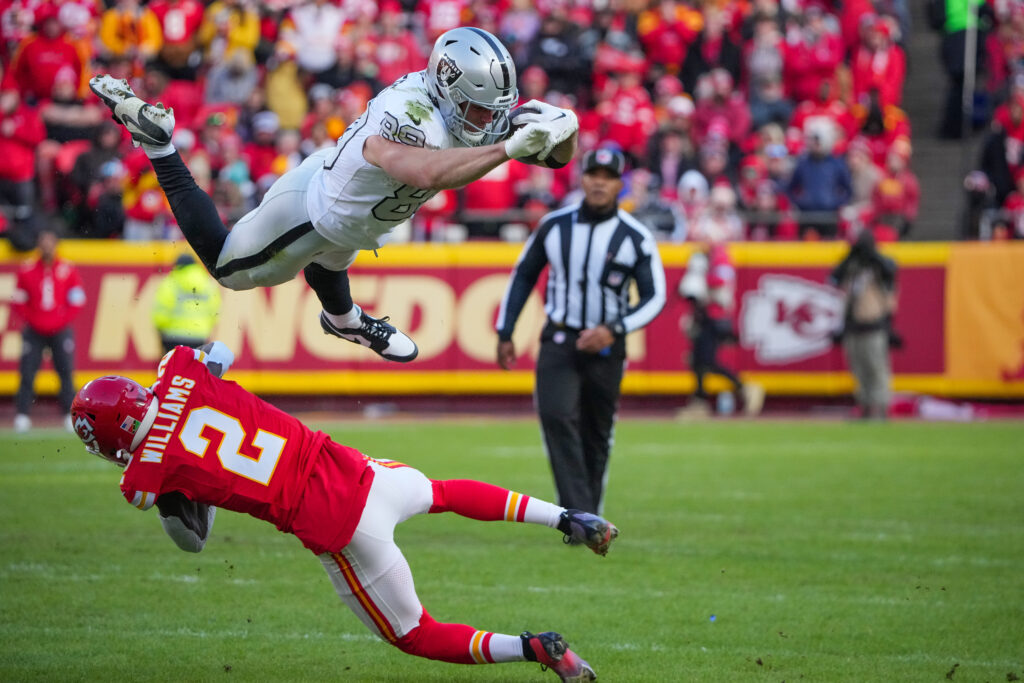
Among His Peers
It wouldn’t be a stretch to say Bowers is already the league’s best receiving tight end.
We’re at a transition point where players like George Kittle and Travis Kelce are getting older, so the tight end depth might not be as full as it was even just a few years ago, but that also shouldn’t discount how quickly Bowers has jumped to the top of the position, especially at a position where it takes time for players to develop.
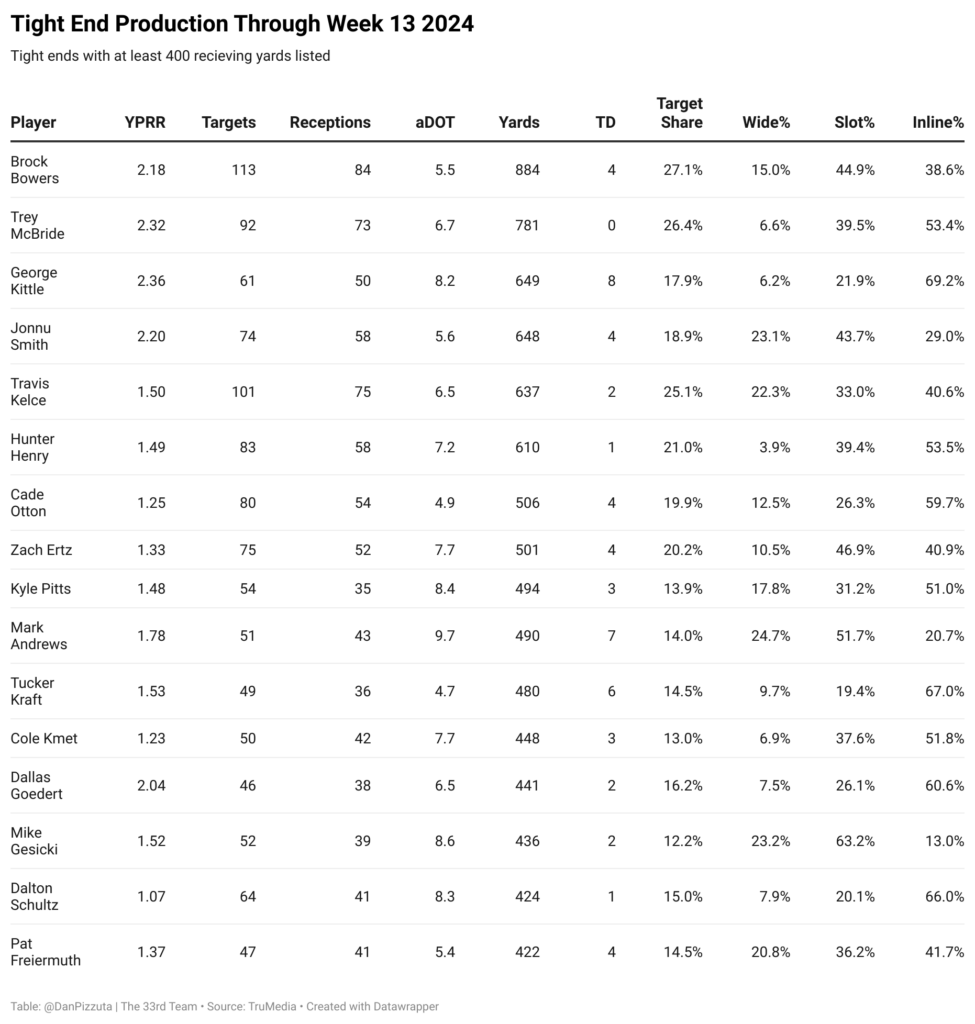
Bowers might join Shockey as a first-team All-Pro as a rookie at the position. Zach Ertz holds the record for most receptions from a tight end in a season with 116. Bowers would need to average 6.4 receptions per game for the rest of the season to match that.
Of course, that’s with a 17th game. To match it in 16 games, Bowers would need to average eight receptions per game across the next four. He’s averaged seven per game so far this season.
Where Can Bowers Improve?
One flaw in Bowers’s statistical output this season has been a lack of receiving touchdowns. He only has four through Week 13. The Raiders’ struggles on offense have impacted Bowers the most. Those four receiving touchdowns are still 28.6 percent of the Raiders’ total receiving touchdowns this season. Mark Andrews has seven touchdowns for Baltimore, but that’s just 24 percent of the Ravens’ total receiving touchdowns this season.
The Raiders have yet to figure out the red zone as a team. They’re 28th in the rate of drives that reach the red zone (23.1 percent) and the rate of red zone trips that produce a touchdown (48.4 percent).
Just three of Bowers’s 10 red zone targets have come in the end zone, so there’s still a reliance on creating after the catch, but that’s much harder to do in the condensed area around the goal line.
Should He Be Offensive Rookie of the Year?
That remains the big question. According to DraftKings, Bowers is third in odds at +1000 behind Bo Nix (+200) and Jayden Daniels (-250). That seems crazy. Even if Bowers isn’t the favorite, it should be much closer — especially to Nix.
What could make this a tough competition is Daniels' rookie season. This award has skewed toward quarterbacks lately as that position has grown into outsized importance in the game. Last season, Puka Nacua set the rookie reception record and was a second-team All-Pro at wide receiver but lost out to C.J. Stroud.
Daniels is having a season that eclipses Stroud’s last year. By EPA per play, Daniels is tied for second among rookies since 2000 with Matt Ryan (0.19) and behind Dak Prescott (0.21). With the early season pace, Daniels could have been looking at the most efficient rookie season we’ve seen at quarterback in the past 25 years.
We still have more than a month of games left, and someone could emerge or fall. It feels pointless to declare a winner at the beginning of December.
However, Bowers is putting up the type of rookie season we haven’t seen so far at the position. He’s likely going to be a first-team All-Pro.
No matter the accolades, we’re witnessing the beginning of one of the best tight ends in football. The Raiders have something to build around on offense, and that will be fun to watch going forward.


